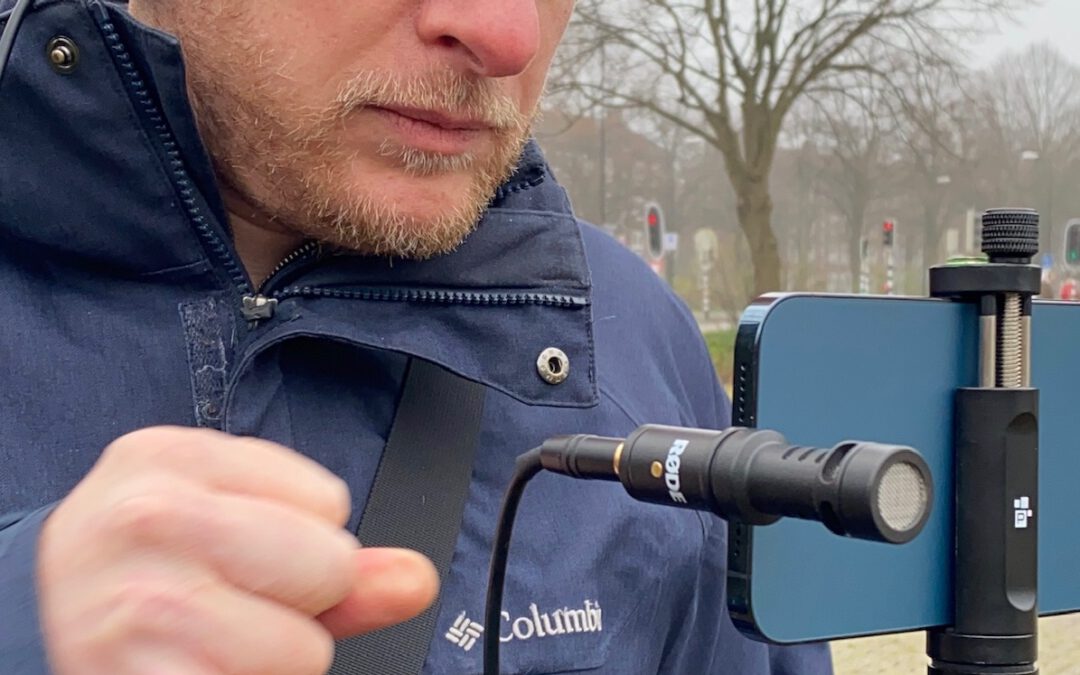Whether you use an iPhone or Android mobile phone: adding a mic to your phone is a great way to improve your audio. In this article, we will compare several Rode microphones designed for use with your smartphone. It is often better to own one good microphone, than many different low budget mics that don’t work well. Because with video, good audio can make all the difference!
What smartphone microphone works best? We’ve put it to the test!
The choice of smartphone mic depends on the type of video you intend to shoot. Lavalier microphones are a great solution to capture good audio while eliminating environment noise. Lavalier microphones, also known as lav or lapel mics, simply clip on your short. However if you are interviewing on the go, at an event for example, hooking up a lavalier mic might just ruin the spontaneity of the moment. Going wireless can be very convenient, but more pricey. So: what smartphone microphone works best in different situations?
We’ll share our personal experiences with the following 3 microphones from Rode.
- Rode VideoMic Me
- Rode Smartlav+
- Rode Wireless Go
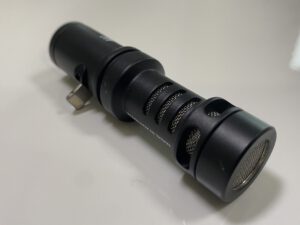
VideoMic Me-L
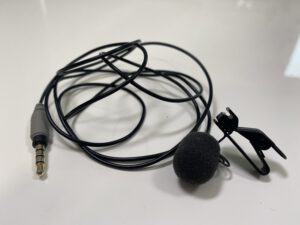
Smartlav+
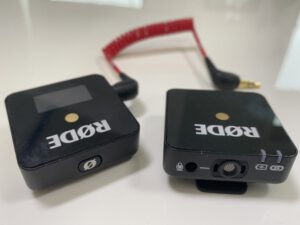
Wireless Go
As you can see, these mics are completely different and therefore have their pros and cons in different environments and settings. We’ve tested all these smartphone microphones extensively. Keep reading to learn more.
Disclaimer: Rode is not the only manufacturer of microphones. There are other good options out there. We do not particular endorse Rode over other brands. We just like their smartphone focused microphone options and are happy with their products and would like to share our experience. This article contains sponsored links. Feel free to ignore these or use them. We do make a small commision from sales through these links.
Rode VideoMic Me
This shotgun mic plugs directly in your smartphone. Despite being a shotgun mic it still has a pretty wide Cardioid pickup range (cardioid, where most shotgun mics are supercardioid or hypercardioid). This means the microphone picks up sound coming from the front, while rejecting sound from the sides and rear. It comes with a windscreen which is essential when you are shooting outside and it’s windy, for example. This mic comes in two versions: the VideoMic Me-L for iOS devices and the VideoMic Me (ad) for all other phones with regular headphone jack inputs.
Least expensive, plug and play
The relative limited cost of the Rode VideoMic Me makes it an attractive option if you just start out with video using your smartphone and want to make drastic improvements with your audio. You also don’t need to invest in accessories. It’s simply plug and play. And it has a headphone jack for sound monitoring (the headphone also work during playback which is handy as well).
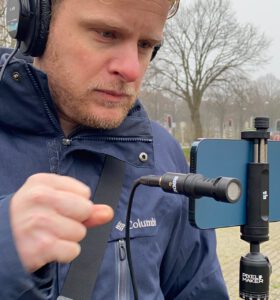
VideoMic Me with headphones plugged in
Outdoor testing of the Rode VideoMic Me
Because of the wide pickup range of the VideoMic Me, the mic picks up more background noise. In the comparison videos at the bottom of the article, you will hear the microphone picking up the sound of her feet moving through the leaves for example. (With the lavalier mic this is less noticeable as it’s positioned closer to Pelpina her mouth.) In some situations this might be ok, but in this case it was too distracting and the other microphones worked better.
We also tested this microphone next to a busy road with traffic on the background. When the presenter is close to the camera/phone, the VideoMic Me still does a decent job, although there is more background noise compared with other mics. When moving further away from the camera, the mic picks up too much traffic noise and the audio simply becomes unusable. Obviously the problem gets worse the further you move away from the camera. The mic simply is not designed for this purpose.
When you are able to stay close to the camera you can still use this microphone outside however. In a situation where there is less background noise or when the noise actually contributes to the video, the VideoMic Me works well. The below video, where we used the VideoMic Me-L, illustrates this well.
In a controlled environment in your home or office where you don’t have to worry about background noise, this is also a great microphone. Even outside when there no background noise and you remain close your smartphone, this microphone performs well. And as long as you are both facing the camera you can even use this mic for interviewing. A great microphone to use on the go. Just plug and play. No wires, no buttons, and not too expensive!
Note: We tested the VideoMic Me-L version specifically for iOS devices. For none iOs devices make sure to order the VideoMic Me (without the -L).
Rode VideoMic Me Pros
Low cost
No wires
Easy to use, plug and play
No need for extra accessories
Small and portable
Rode VideoMic Me Cons
Performs less well with background noise
Performs less well long distance
Video Smart Courses
To learn more about shooting video with your Smartphone check out my courses
Rode Smartlav+
The Rode Smartlav+ (ad) is a lavalier mic (or lav mic for short) also known as a lapel mic. These types of mics simply clip on you clothes. The wire is typically hidden underneath your clothes, and therefore the mic is hardly noticeable on camera.
Unlike other lavalier microphones, the smartlav is designed to plug directly into a smartphone.
There are two common types of 3.5 mm audio jacks: Stereo (TRS) and Headset jacks (TRRS) where the headphones and mic jack are incorporated into one. Most lav mics are fitted with a stereo jack which don’t work with smartphones. You can still make them work with a 3.5 mm TRS to TRRS adapter such as the Rode SC4 TRS-TRRS-adapter.
When you are buying a microphone specifically for your phone, it’s just easier to buy a mic with a headset jack, like the Smartlav+, and save the expense and hassle of using an adapter. Of course if you already own a good lavalier mic, you will be good to go with the adapter.
We really appreciate our lavalier mics and use them more than any other type of microphone. Once you get used to clipping them on correctly, lav mics will be consistent and reliable as they are always the same distance from your mouth. However, not everybody is a fan of lav mics. Most lavalier mics are wired and even though they’re small: they’re still noticeable on camera. Check out the video at the bottom of this article to see how this mic performs in the field.

This microphone only comes with 1.1m cable, which is just not enough if you want to hide the cord behind your clothes. So you will need to buy an extension cable, a TRRS extension cable that is. The Rode extension cable (ad) is 6 meters (20 feet) however, which can be a bit inconvenient.
If you are interviewing someone or when there are two people on camera, don’t forget you need two mics (and two extension cord) and an dual TRRS mic splitter, such as the SC6 from Rode, that allows you to plug two TRRS microphones into your phone. Not necessarily a problem, but it does result in additional cost.
Pros Rode Smartlav +
Easy to use, plug and play
Reliable
Attached windscreen
Small and portable
Cons Rode Smartlav –
Cable is too short, needs an extension cable
You need two mics and a dual mic splitter for interviewing
Video Smart - Make smartphone videos like a pro
Read more about smartphone video in Pelpina her new book
Rode Wireless Go
This Rode Wireless Go (ad) set is the only microphone not specifically designed for smartphones. You only need to replace the standard cable for the SC7 cable (ad) and you are good to go.
The Rode Wireless Go, basically works as a lavalier mic, but wireless. It therefore keeps you mobile. You can be far away from the camera and the microphone works amazingly well (check the following video in which Pelpina tests the range of the Rode Wireless Go). The sender and receiver are small and light, great for an on-the-go shoot. The sender itself has mic build in, so no need to plug in a separate lavalier mic. The downside of not plugging in a mic is that the sender itself is more visible compared to a lav mic. (Tip from Pelpina for the ladies: hide it in your bra!).
You can also plug in a separate lavalier mic, but you have to plug in a mic with a TRS stereo plug. That means plugging in the Rode Smartlav+ directly does not work. You have to use a TRRS-to-TRS adapter (ad).
Hooking up the Wireless Go is obviously a little bit more complicated compared to the other mics, but it’s still very user friendly. In the next video Pelpina shows you how.
In some situations you may experience interference in the wireless transmission. This is a downside with all wireless systems. It’s just something to be aware of and to monitor before you start recording. Personally we have experienced this problem yet, but we do not often shoot in busy areas either.
The Wireless Go runs on a rechargeable battery, which means it can stop functioning in the middle of a shoot if you forget to charge the batteries. This is another thing to keep an eye on.
This microphone does come in very handy in situations where mobility is required or when shooting from a distance. Especially when shooting at a distance when the other mentioned mics simply won’t work. You can also use this mic when speaking to an audience at a conference or workshop for example. Definitely a handy mic to have in your toolbox.
Rode Wireless Go Pros
Wireless and long range
Small, portable
Sender can also function as microphone
Rode Wireless Go Cons
Most expensive option of the three
Need additional adapter to work with the Rode Smartlav+
1 sender works with 1 receiver (can’t use 2 receivers with 1 sender)
Needs charging
Side by side comparison
So all of these microphones serve their purpose and each have their limitations. In the below videos, we show you how each of the mics perform in different environments.
Outdoors – busy street
First up, and the most unforgiving: outdoors with a noisy background.
It’s clear the VideoMic Me is not suited for this type of environment. The Smartlav+, lapel mic audio is most natural and rich, while the Wireless Go does the best job at eliminating the background noise. The distance from the camera only matters with the VideoMic Me, as the other mics are clipped on. Obviously with the Smartlav+, there is a limit in the cable length (we used a 5m extension), and the cable will show if you are going for a full shot.
Outdoors – minimal background noise
Next is another outdoor shot. This time without traffic noise. Pelpina walked through leaves, so it isn’t exactly quiet either. Let’s see how the microphones perform here.
Again, the VideoMic Me wide pickup patterns picks up too much sound of the leaves to where it is distracting. The Smartlav+, lapel mic audio results in the most rich audio, and again the Wireless Go does the best job at eliminating the background noise.
Indoor, studio setting
Last up is a comparison indoors, in my home studio.
This time the VideoMic Me hold up perfectly. The Smartlav+, lapel mic audio consistently produces the most rich audio, in our opinion, and the Wireless Go performs similarly to the VideoMic Me.
Conclusion
So obviously there are some advantages to owning all three mics (or something comparable from a different brand). But if you are just starting out, or are on a budget it does not make sense to purchase all three right away. Our advice: don’t go cheap just because you want to own a variety of different mics. It is often better to own one good mic, than many different low budget mics.
We personally started out with only a lavalier microphone, because Pelpina filmed most of the videos herself with just one person (herself) in front of the camera. Our advice would be to first think of the type of videos you’d like to create, and what kind of microphone would work best for those videos/situations.
With video, good audio can make all the difference! So depending on your the type of videos you shoot, select the mic that best suits your needs and go for that one.
Check out our smartphone video equipment list for a full overview of smartphone video gear we use. And don’t forget to check out our courses. If you don’t own Pelpina’s book yet make sure to check that out as well.
Happy filming!

